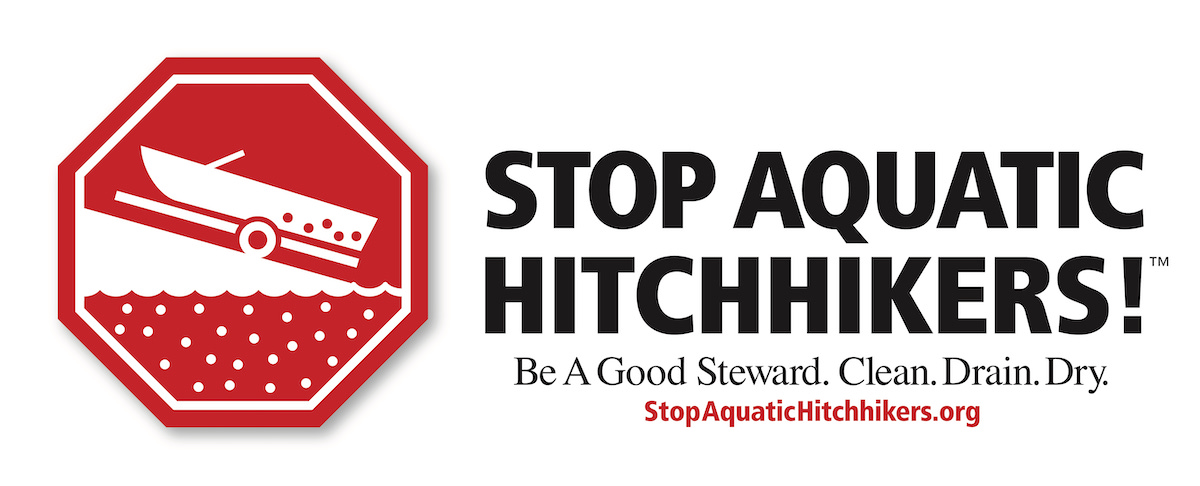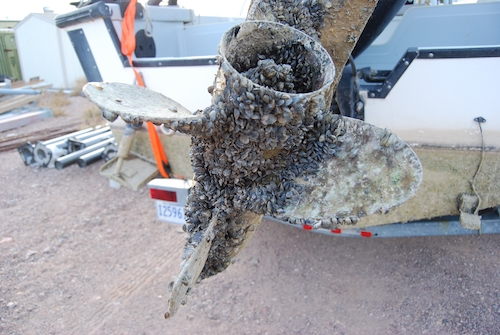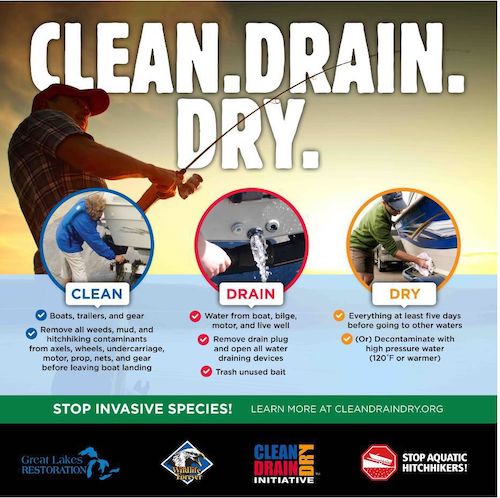Part of being a responsible boater is always being aware of the environment and the impact your boat may have upon it, and in many parts of the nation this includes paying particular attention to aquatic invasive species, called “AIS” or aquatic hitchikers. The problem is that AIS can act as hitchhikers on your boat and/or trailer, using it to travel from one waterway to another.
Fortunately, with a little bit of attention you can help eliminate the problem.
How to Clean, Drain, Dry Your Boat
- Clean: After use, clean your boat, trailer, and any other recreational equipment.
- Drain: Make sure your boat is completely drained; this includes removing the drain plug, and emptying the bildge, livewells and ballast tanks.
- Dry: Allow your boat to completely air-dry before launching it in another body of water.
Green Boating 101: 10 Best Practices for Boaters
What are Aquatic Invasive Species, or Aquatic Hitchhikers?
AIS can be both plant and animal in nature.
The zebra mussel is one of the most renowned and reviled invaders, because their appearance in the United States has had significant environmental and economic consequences.
- First discovered in Lake St. Claire in 1988, these small shellfish are native to the Black and Caspian seas.
- Although their introduction to U.S. waters can’t be pinpointed, most scientists believe they hitchhiked across the Atlantic in the bilge or ballast waters of a ship.
- They quickly spread, and today many municipalities and industrial companies spend millions of dollars annually to remove the pipe-clogging shellfish.
On the plant side of the equation, hydrilla weed is probably the best known invasive.
- Due to the aquarium trade this aggressive plant trotted its way from Asia to all around the globe as early as the 1950s and is now in every continent except Antarctica.
- Unfortunately, it can completely overtake a body of water and crowd out natural plants, affect water temperature and oxygen levels, and impede navigation.
- Often costly eradication methods are necessary. But after hydrilla has been eliminated from a waterway it can be re-introduced—and one of the main ways this happens is via boats and trailers.
In addition to these famously problematic aquatic invasives, there are numerous types of animal and plant species that present threats to our waterways. Crabs, snails, fish, and countless types of plant species all have the potential to jump from one waterway to another, and then wreak havoc with the environment.
How to Load a Boat on a Trailer
How Can Boaters Help Fight AIS
While boats and trailers are a common way for AIS to spread, we boaters can take some very simple measures to become part of the solution, rather than being part of the problem. In fact, in many states cooperation is mandated by law. Generally, this boils down to “clean, drain, dry.”
1. Clean: After use clean off both your boat and trailer.
That means giving the entire rig a good washdown (which we’re sure you’re doing anyway as a matter of basic boat maintenance) and as you’re cleaning it, keeping a sharp eye out for and removing any visible plant or critter life.
2. Drain: Next comes making sure your entire boat is completely drained.
- This includes not only the bilge, but also any part of the boat that may be holding “raw” water from the lake, river, or bay it was just in, such as livewells and ballast tanks.
- If you have a boat with substantial ballast tankage like some wake sports boats you may even want to install a ballast tank decontamination product.
- And don’t forget that engines can hold water, too, so they also need to be completely drained of all raw water.
3. Dry: Allowing your boat to air-dry completely prior to launching it into a different body of water will help ensure that any critters which cleaning and draining didn’t take care of won’t make it into a different waterway.
- Environmental conditions can change sufficient dry-times, but most states recommend allowing your rig to dry for at least 48 hours before you consider launching it again and some recommend as long as a five-day wait.
- If you want to launch before then, washing the boat with high-pressure heated water of 120-degrees or more, or towel-drying the boat and trailer, are also effective.
In addition to the clean, drain, dry process, anglers should remember to clean out bait buckets and never introduce live baits from one body of water to another.
Divers should give similar treatment to their dive gear, and hunters or anglers on foot should use waders that don’t have felt soles.
Learn more about aquatic invasive species issues and how you can be part of the solution by visiting Stop Aquatic Hitchhikers, a national habitat protection and conservation campaign.
Read Next: Towing & Trailering Guide
You May Also Like:


